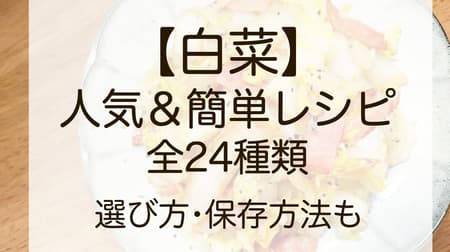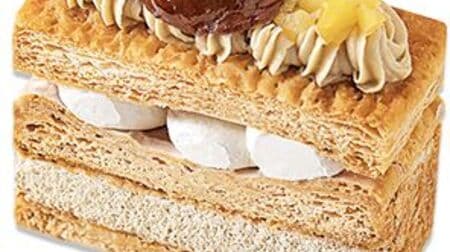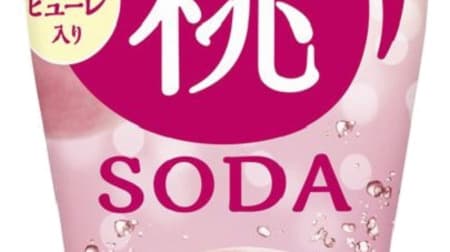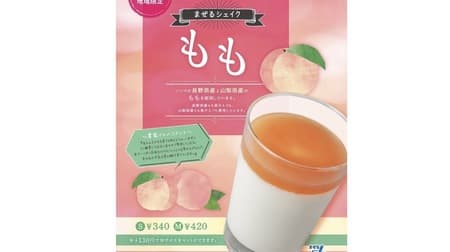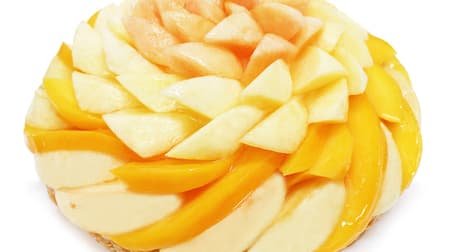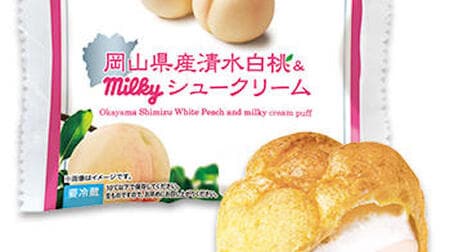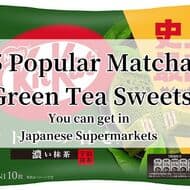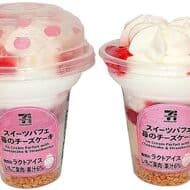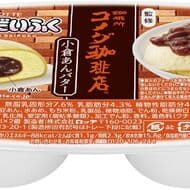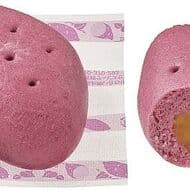The En-En-Eat editorial staff, curious about the mechanism, started an experiment using two peaches at the same time as asking questions to the experts. The other was wrapped in aluminum foil ("armed" for convenience!) and placed in the refrigerator. The other one was wrapped in aluminum foil and put in the fridge.
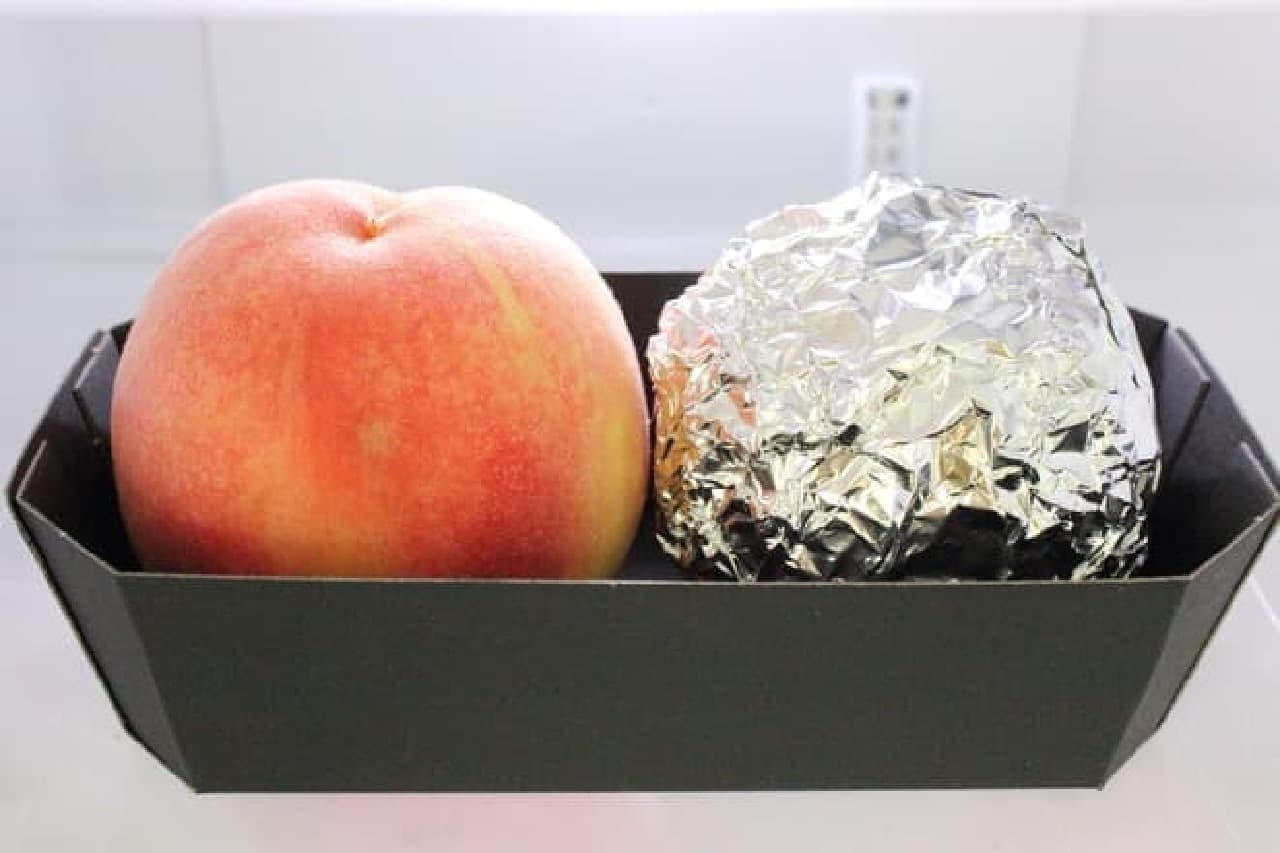
(The image is from the day I put them in the refrigerator. They look delicious and bouncy)
After about two weeks, the naked one was so wrinkled that I felt sorry for it, but the armed one remained firm.
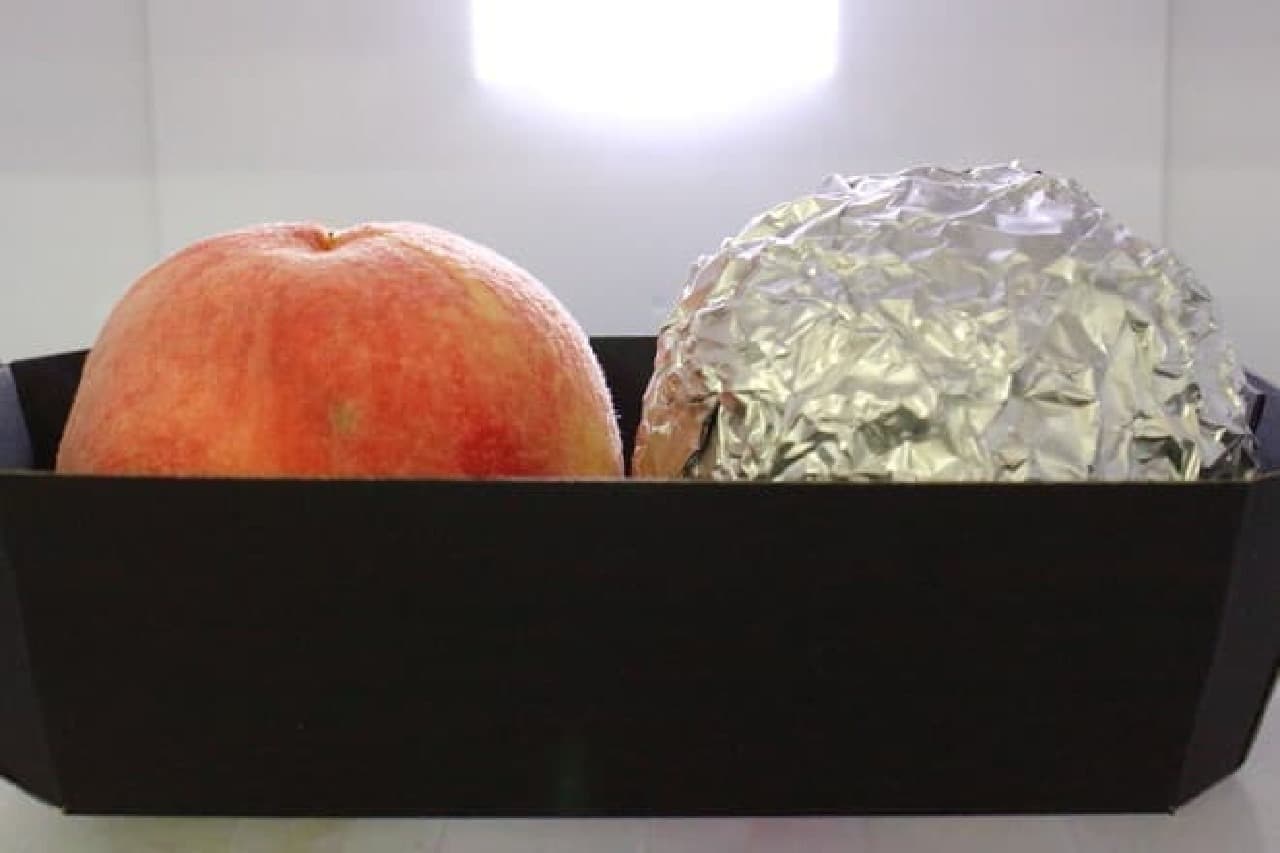
After another two weeks and a month in the refrigerator, what happened to the two peaches?
They look so different.
First of all, when we look at the naked one, we can see that it is clearly more wrinkled and darker than it was about two weeks ago, when it was even wrinkled. Furthermore, compared to the initial state of one month ago, they were obviously smaller and squeezed out.
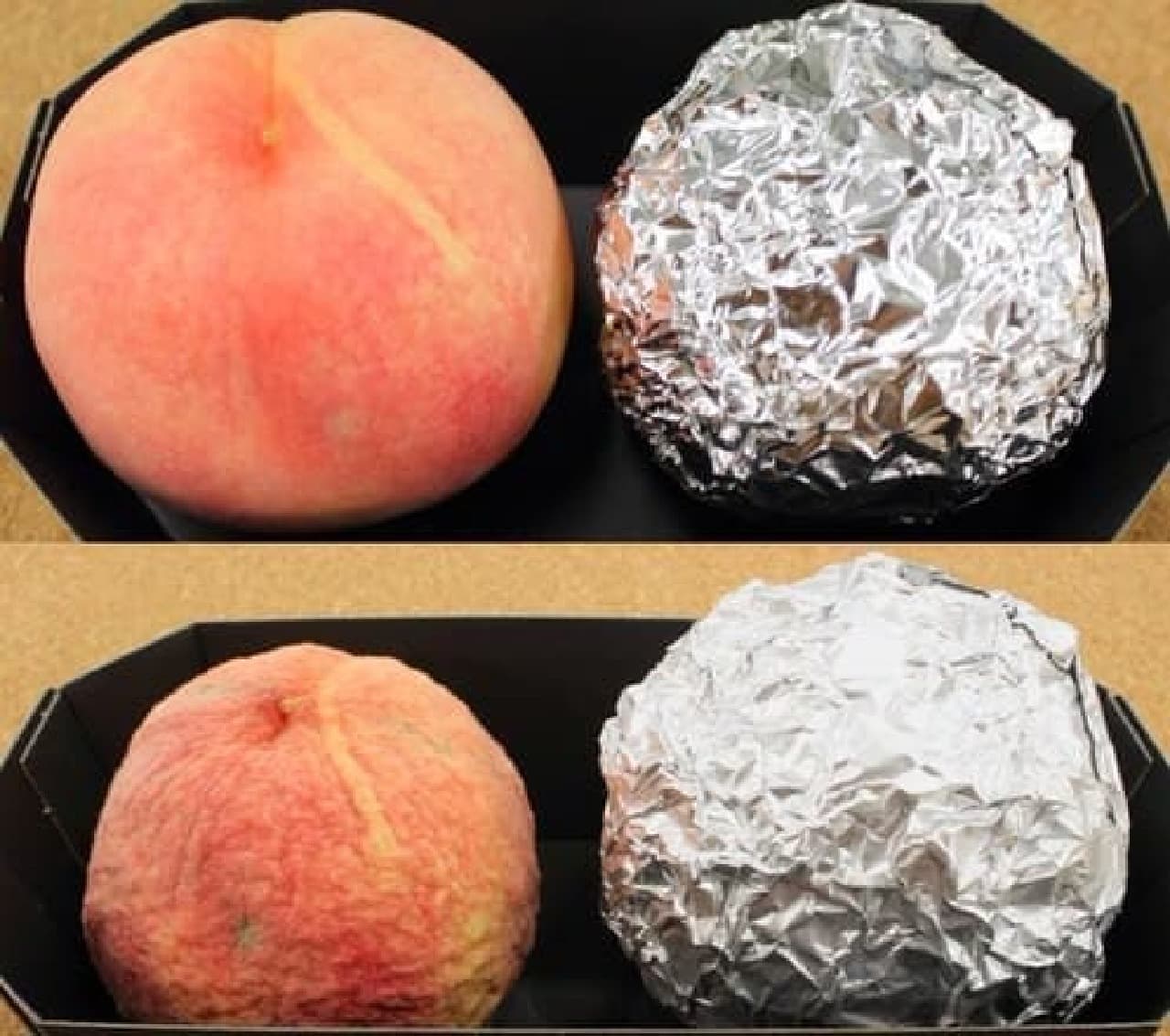

On the other hand, the one I left armed. 2 weeks ago, I had confirmed that it was still firm, but when I lightly touched it again, it seemed to be the same as last time. Whoa, this might work! With high expectations, I peeled off the aluminum foil to reveal the skin, which remained firm. Although the skin has darkened, there is no major damage.
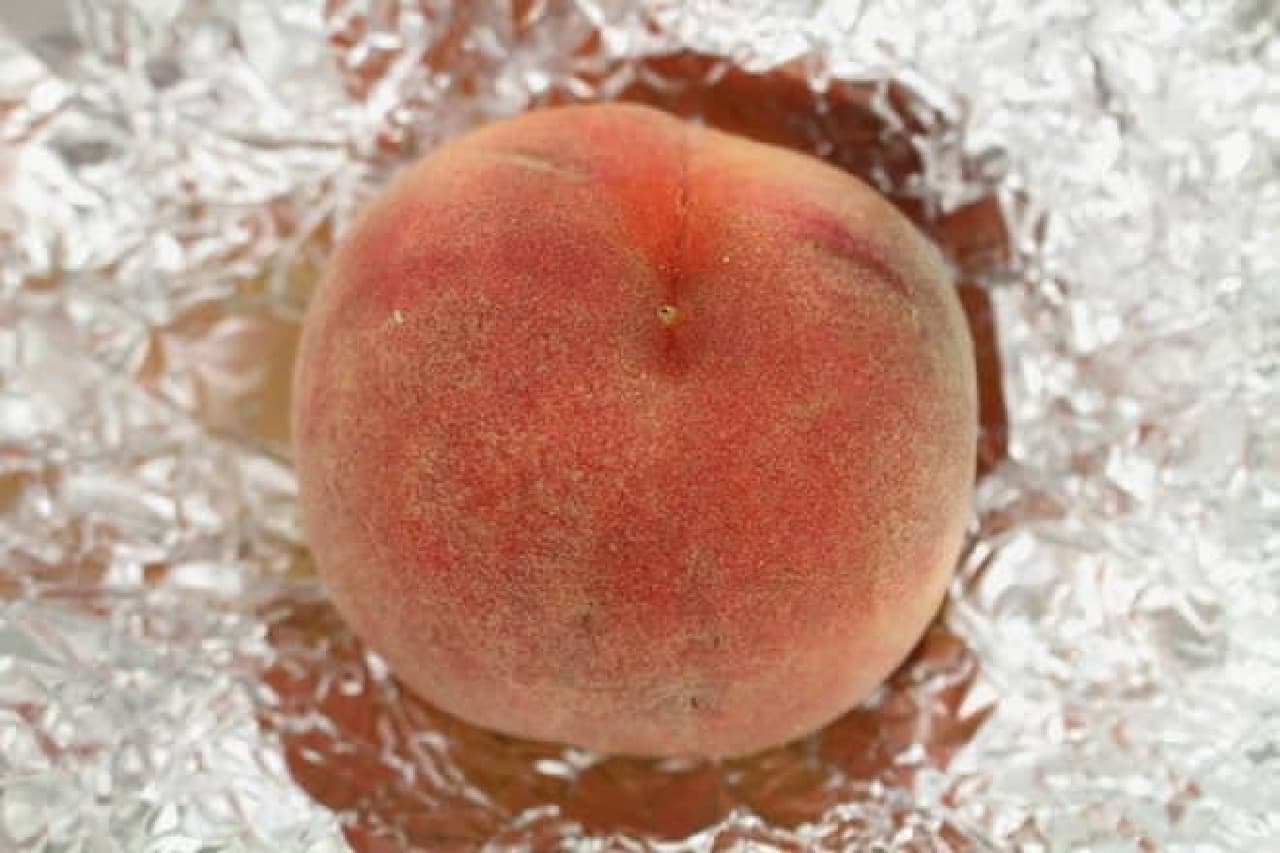

Now, let's peel the skin!
When the knife is inserted into the armed side, the skin is peeled off so smoothly that it looks as if it could be peeled off by hand. It is so smooth that you could peel it off by hand. It's like peeling a ripe peach. I stopped when I had peeled half of the skin. When I looked closely at the pulp, I found that there were a few places where it had hit the skin, but there was no major damage on the surface.
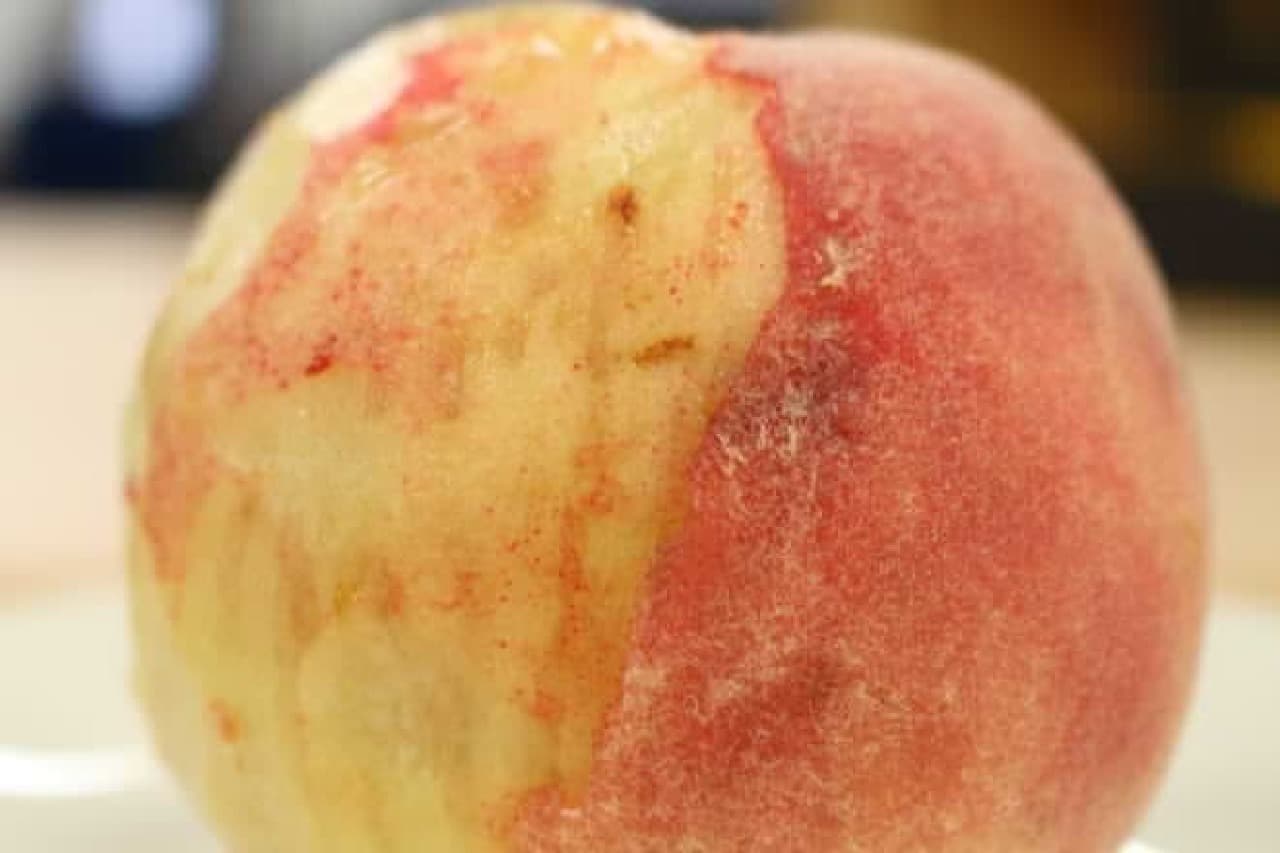
However, the moment I cracked open the pulp, I (the author) realized that I had lost. The inside of the fruit, mainly the core, was completely damaged and had turned black. I was screwed...!
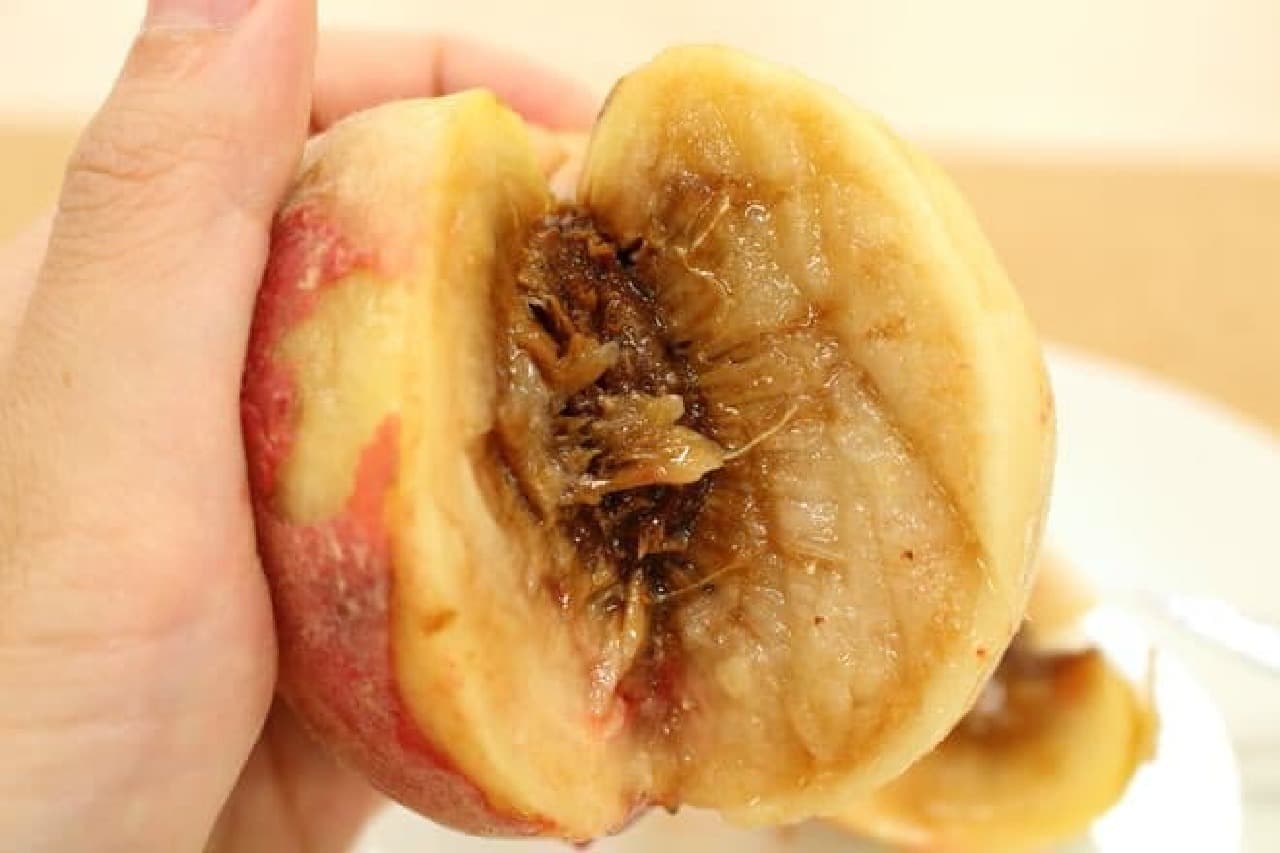
Just to be sure, I scraped off the barely discolored surface and tried to eat it, but it was not very edible (apologies to the producer...). The texture was not unpleasant, but there was a tingling sensation on the tongue and an astringent taste, and I could not feel any remnants of the delicious peach flavor. It was a complete and utter failure.
This is not the end!
I had high expectations (I waited a month for this!). The failure of the "aluminum foil armament" brought great disappointment to the En-En-Eating editorial staff. But let's remember now. But let's remember that wrinkled peach...! We peeled this one as well.
It was very difficult to peel because the water had drained out and the knife would not go in. I peeled half of the peel, sometimes making the peel 1cm thick, and broke it open.... The pulp was just as beautiful as usual!
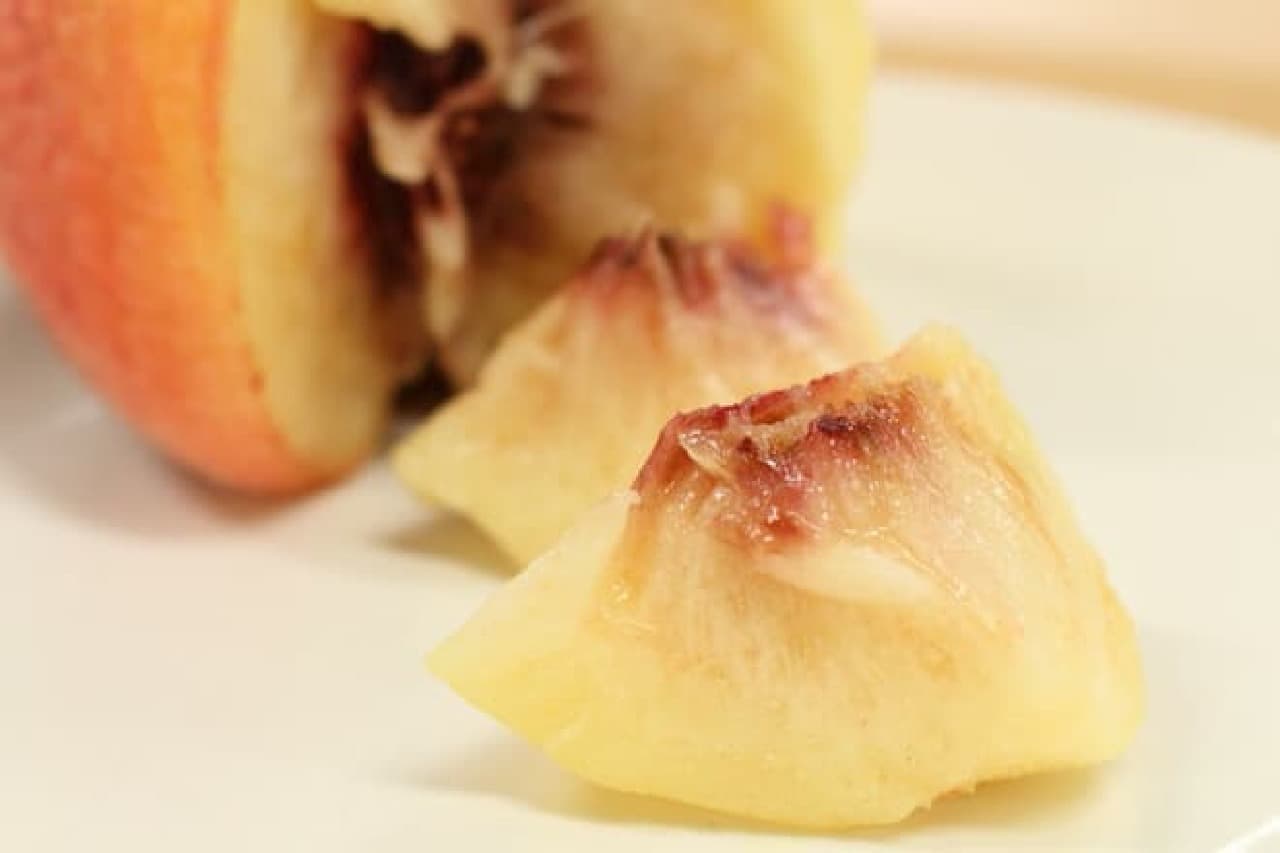
The texture was like a ripe fig. When I ate it, I found that it had lost the thick texture characteristic of peaches, and was more like a konnyaku (a kind of kelp) that was limp and crunchy. However, the peach-like flavor was still there. It was not fresh, but it still had that distinctive sweetness. It was slightly astringent, but not to the point of being inedible.
Aluminum foil armoring is not a panacea.
When we looked at whether or not the taro was maintained in an edible condition, we found that preserving the taro naked was more successful. The naked ones were more successful, although they were wrinkled and not as fresh as they should have been.
However, I think that wrapping them in aluminum foil was also successful in terms of "moisture retention. From what I could see from an amateur's point of view, the core of the peach seemed to be damaged, so it may have been a fragile piece to begin with. If I had wrapped the naked peaches, the result might have been different...? Aluminum foil and refrigerators should not be overconfident. After all, it seems better to make an effort to eat them fresh and delicious.
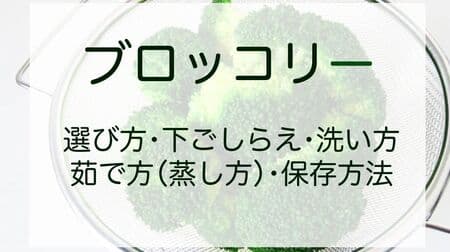
![Easy Chestnut Peeling and Boiling] Easy preparation of chestnuts, even the devil's skin and astringent peel! Easy peeling of troublesome chestnuts by freezing and boiling water](https://image.entabe.jp/upload/articles/55764/33e7d6c6468b9180be89aa094c35566b_special.jpg)
![[Vegetable preservation method] tomato, bitter gourd, carrot, cabbage, turnip, broccoli [complete preservation].](https://image.entabe.jp/upload/articles/49952/b53baa10b7cef70cd2ac7a7089836329_special.jpg)
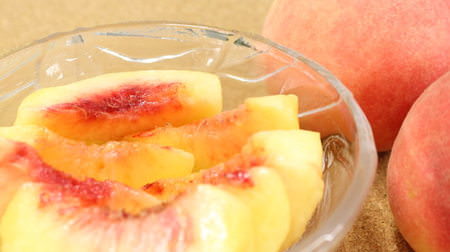
![Part-time job / Outsourcing] Web Writer Wanted: Gourmet, Recipes, Sundries, Life Hacks, etc. [Housewives and students welcome].](https://image.entabe.jp/upload/articles/56003/3c8044e6c70f93cb10b5a58e2aa0ce58_special.jpg)
